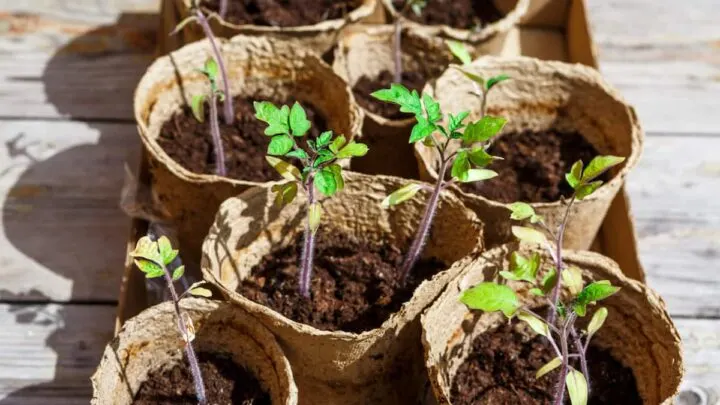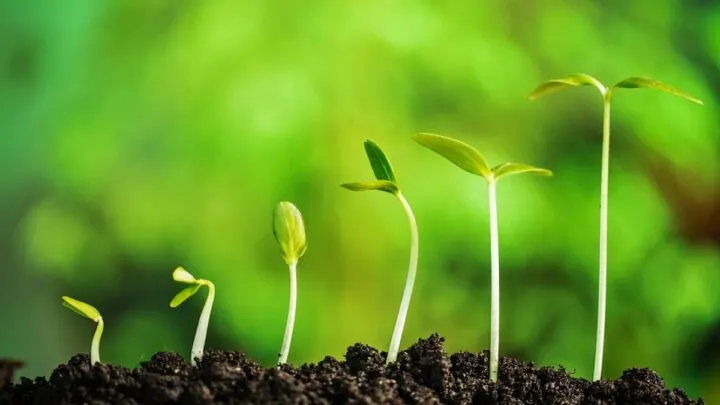Many gardeners prefer to sprout their own seeds to grow their own seedlings instead of buying them. If you are growing your own seedlings or learning how you must be discovering that leaves typically develop as soon as your seeds sprout. An unsuccessful or troubled seedling, a lot of times, won’t develop leaves, or its leaves won’t look healthy. In this case, you may be wondering, Can seedlings survive without leaves?
Unlike full-grown, adult plants, seedlings are in a more vulnerable state and cannot survive without leaves. Leaves are external organs of a seedling that take in the environmental nutrients needed to grow. If a seedling has unhealthy leaves or isn’t developing them, some steps can be taken to encourage them to grow or become healthier.
In short, seedlings need as many nutrients as they can get to grow out of the seedling stage and into a more mature one. Leaves are crucial in the successful growth of seedlings.
Keep reading to learn more about the importance of proper leaf development in the health and growth of your seedlings.

What Is Photosynthesis?
Photosynthesis is a process that seedlings and plants go through in order to nourish themselves and clean the air around us. Through the seedling leaves, it will take in carbon dioxide and water and convert them into glucose and oxygen.
The plants of the cell begin to alter. The Water components lose electrons, and the carbon dioxide components reduce, making them gain electrons. After the transformation, the seedling will release the clean oxygen into the air and store the glucose as a food supply and growth inhibitor.
The photosynthesis process relies heavily on the seedlings having left to receive the carbon dioxide and water from their environment. Seedlings cannot possibly grow without photosynthesis.
Easiest Seedling To Start
- Tomatoes
- Cauliflower
- Brussel Sprouts
- Watermelons
- Basil
- Broccoli
- Kale
- Cabbage
- Peppers
- Marigolds

How To Make Your Seedling Leaves Healthier
- If your seedlings leave apparel dead, don’t give up; evaluate them first. If you see even the slightest bit of green color on any of the leaves or anywhere on the stems, then you might be able to save your seedling. Most of the time, your seedlings need patience and effort. Refer to the techniques listed below.
- Look for yellowing, browning, and wilting of your seedling leaves. If you spot it, then chances are you are overwatering them. Check to see if your soil is too wet and if it is; you must take your seedlings out of any direct sunlight and let the soil completely dry out before placing it back into the sun. If your soil isn’t drying out after a couple of days, you might need to transfer your seedlings to a new container with fresh soil. You should see improvement in your leaves shortly.
- Check to see if you are underwatering your seedlings. If so, your leaves will most likely be dry, wilted, and slightly brown on the tips. They could even be falling off the stem. Your soil may also feel very dry and have a cracking look to it. If this is your seedling, make sure you are watering them regularly. After an adequate amount of water, your seedlings and their leaves should begin to look lively and green again.
- If you notice dead seedling leaves, pick them off. Think of it as a fresh start. You want the focus of the seedlings’ energy to be put into new leaf growth and not reviving old ones. If you notice the leaves won’t easily pinch off the stem, then use scissors to gently cut them off at the base where they attach to the stem. Be careful not to damage the stem itself.

- If your seedlings are receiving the right amount of water and still struggling to produce healthy leaves, make sure they receive enough direct sunlight. You might need to move them to a new location in your home or possibly to a greenhouse with better natural light. After a couple of days of receiving enough sunlight, you should notice your seedlings begin to perk up again. On the other hand, your seedlings can receive too much sunlight and dry out. Ensure they are out of any direct light source during the night and can rest.
- If you notice a slight discoloration of your seedling leaves or weak stems, they could be lacking certain nutrients. Many times a fertilizer of some kind is beneficial to add to the soil. Many recommend adding compost to the soil mix before planting seeds. There is also pre-mixed seed starting soils specifically made to support brand new seeds and sprout them into seedlings. Check your local home and garden supply store.
- If you notice that your seedling has been damaged or crushed in some way, check to see if the roots are still intact by gently removing the plant from its starting container. If so, place a toothpick or a small stake into the container to give the seedling stem support and to allow it to strengthen and heal its wounds. Be patient and give it time; it may heal and produce new leaves.
Final Thoughts
Overall, some varieties of plants will live without leaves, but seedlings need them to grow and survive. Without leaves to receive the carbon dioxide and water, the seedlings will not be able to generate their food source and nourish themselves with photosynthesis.
Sometimes seedlings may be lacking a particular nutrient and may not be producing any leaves. Their leaves could also look unhealthy. Luckily, there are plenty of ways in which you can revive them. Don’t give up on your seedlings.
Most expert gardeners recommend being patient and giving seedlings time to grow healthy leaves. Do everything you can to encourage healthy leaf growth as leaves are one of the most critical components of a plant and their growing success.

Hi there, my name is Allie and welcome to my blog; GareningWithAllie!
Much of what you see written here is just our personal experiences with gardening. Along with the content I write here, there is also a unique collection of gardening topics covered by some of our close friends. I hope you find everything you read here to be helpful, informative, and something that can make your gardening journey the most lovely experience ever! With that said, Happy Gardening!
